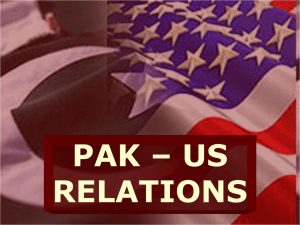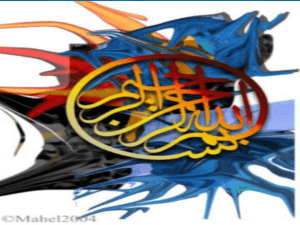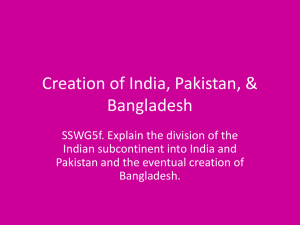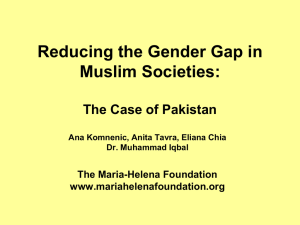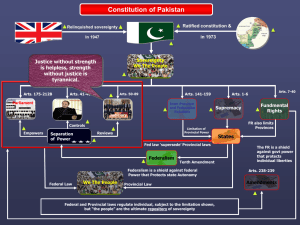NGO 002
advertisement
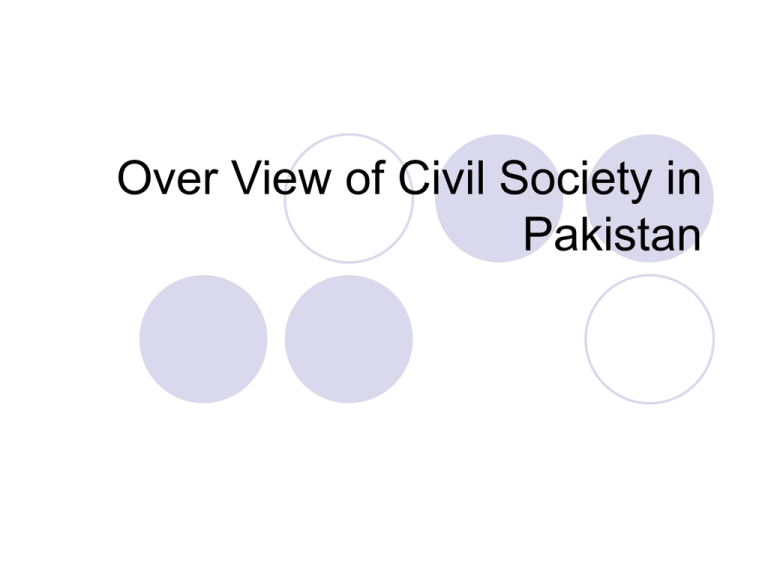
Over View of Civil Society in Pakistan Civil Society in Pakistan political parties, Nongovernmental organizations, Trade unions, Professional associations, Philanthropies, Academia, Independent and quasi-independent pressure groups, Think tanks, and traditional, informal formations such as faith-based organizations, shrines, seminaries, neighborhood associations, burial societies, jirgas and savings groups. Typology NGOs (Non-Governmental Organization): Private, non-profit citizen organizations, pressure groups and support centers. Also referred to as the citizen sector. Community Based Organizations (CBOs): Membership-based, grassroots organizations - a subset of NGOs. Trade Unions: Organized associations of the workers in an industry or profession working for the protection and furtherance of their rights and interests. CSOs (Civil Society Organizations): CSO is used as an umbrella term to refer to NGOs, CBOs, think tanks, trade unions, cultural groups and informal citizen organizations Structure of Civil society in Pakistan According to Aga khan Development network There are 10,000 to 12,000 Registered NGO in Pakistan. If unregistered are considered then the number reaches 60,000. 59% in Punjab, then in Sindh, then in K-P, Then Baluchistan. Registered under five different laws. The Societies Act (1860), Companies Ordinance (1984), the Trust Act (1882), the Charitable Endowments Act (1890), the Co-operative Act (1925) and the Voluntary Social Welfare Agencies (Registration and Control) Ordinance (1961). Thematic focus Education (including basic, Primary, adult and informal) represents 56 percent of the total, Health and women’s development accounting for 39 percent. Other areas of focus include early childhood development (15.2 percent), sports promotion and recreation (12.3 percent) and community development (12 percent). Intermediary NGOs and support organizations are also most actively engaged in education (69 percent); and women’s issues (56 percent). Sources of Funding International Donations CIDA, SDC, USAID, DFID, UN, Embassies of Australia, Norway, Sweden, Switzerland, the Netherlands International NGOs Oxfam, Save the Children, Asia Foundation, British Council, Christen Social Services, Action Aid etc. Internal Fund Generation In 1998 Pakistanis gave an estimated Rs.41 billion in cash and kind, and another estimated Rs.29 million in time. As much as 65 percent of all monetary giving went to individuals, two-thirds of which was ‘zakat’ Membership Base one-third had fewer than 50 individual members, 17 percent had 50-99 members, 20 percent had 100-149 members, 5 percent of the total had more than 450 members. Umbrella Bodies Pakistan NGO Forum [PNF] Advocacy Development Network, Co-ordination Council for Child Welfare, Women in Development (WID) networks, Rural Support Network (RSPN), Pakistan Reproductive Health Network (PRHN), Pakistan Education Network (PEN), Pakistan Microfinance Network Environmental NGOs Network.



